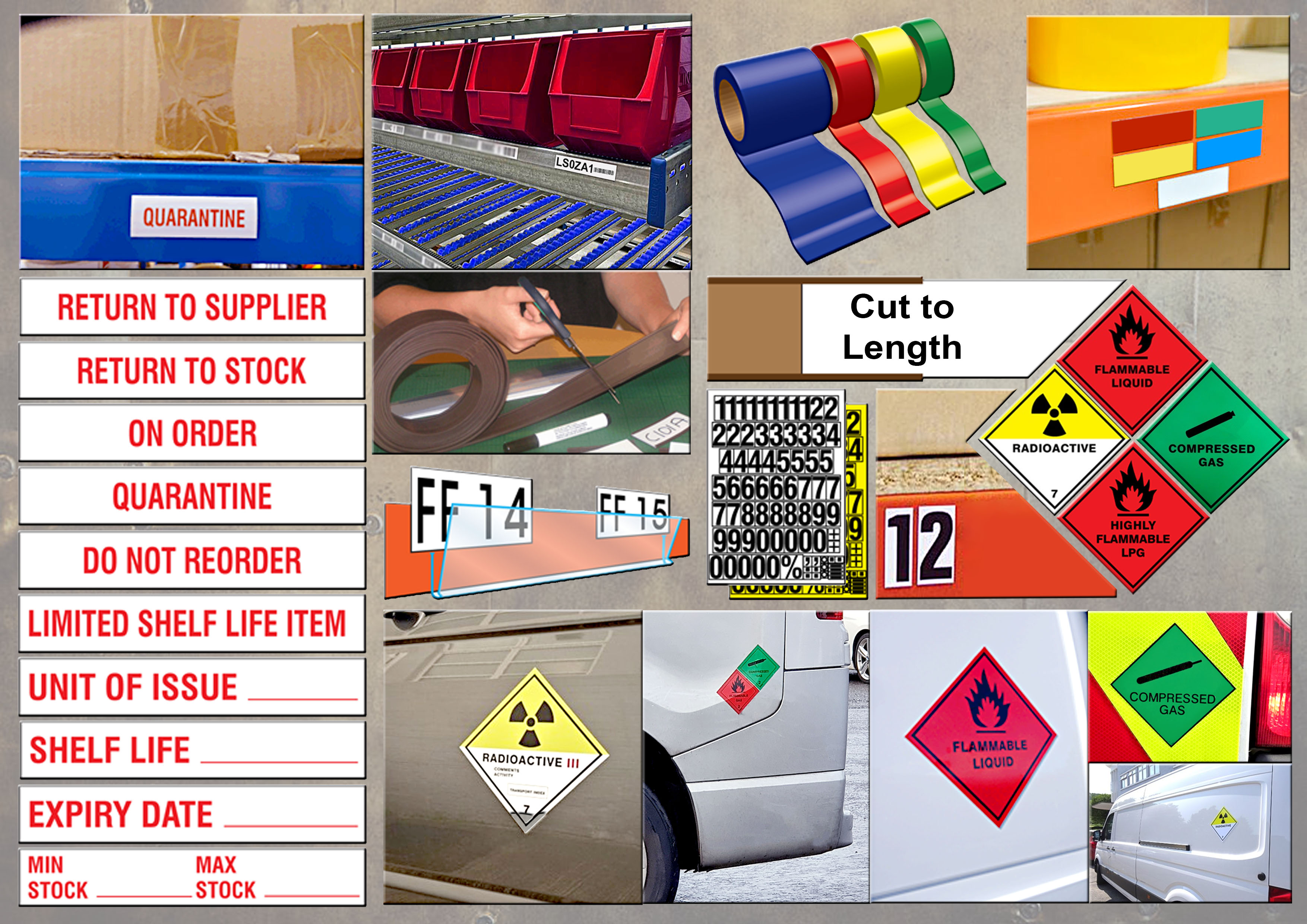
In certain industries, magnetic labels fare better than their plastic counterparts. For example, for industries based at sea, normal labels don’t function well due to exposure to water, salt and harsh weather.
Instead, magnetic tapes and labels are used. These affix to the metal hulls of ships, and since they have a metal base, they don’t break down on the waves.
Other industries use magnetic labels, too. However, for them to work well, you must know how to use magnetic tape and labels properly.
Below, we discuss how magnets and magnetic tapes work, how to use them and their advantages and disadvantages.
What is Magnetic Tape and Labels Used For?
Magnetic tape and labels are used for the same reasons as non-magnetic labels. Overall, they:
- Inform people of danger
- Communicate essential information
- Form a part of a company’s safety policy
Without them, it becomes difficult for companies to keep staff safe. Businesses that don’t use labels and tapes tend to have a higher rate of accidents, leading to costly court cases and, worst of all, injury.
The tape has a few more uses than labels and can often be used for practical reasons: to separate, signpost and highlight. For example, the tape is often used in shipping and delivery bays to signpost where goods can be stored.
Magnetic Tape: The Advantages and Disadvantages
The key advantage of magnetic tape is obvious: it sticks to magnetic surfaces. No matter what happens, you don’t have to worry about the tape or label falling off; magnetism is powerful, and it’s rare to find natural forces that are stronger.
Other advantages are simply a consequence of this. Since magnetic labels are resilient, you won’t need to replace them often, cutting down business costs.
Additionally, when you can trust a label or tape won’t fail, it becomes easier to enforce safety policies.
However, there are a few disadvantages and scenarios where you may opt for a non-magnetic variant.
You don’t solely affix safety labels to metal surfaces. Sometimes, you may need to place them on wood, plastic or composite materials. In these cases, you need a non-magnetic option.
Furthermore, by limiting your label placement to magnetic areas, you could leave blind spots, compromising your overall safety. Instead, you should choose a mixture of magnetic and non-magnetic labels to maximise security.
If you’re unsure on whether you need magnetic or non-magnetic labels, we’ve written a blog just for you: How to Decide Between Magnetic and Non-Magnetic Labels
How to Use Magnetic Labels and Tape
So, how do you use these tapes effectively?
Well, you find a magnetic surface, ensure it’s in a place where it’s easily seen and place it there.
Yes, it’s that easy. Magnets are fun, aren’t they?
Why BS 5609 Compliance Is Essential For Magnetic Labels
When buying magnetic labels, it’s essential to see if they comply with BS 5609 regulations. These regulations relate to seawater, sun, salt and abrasion.
Since magnetic labels are mainstays on boats, yours must pass these regulations. Even if you aren’t using these labels for seafaring, they send strong trust signals of quality and durability.
Browse Our Range of High-Quality Magnetic Labels Today
Magnetic labels have somewhat niche applications, but when they’re used correctly, they can be an indispensable resource for businesses.
Now that you know how to use them correctly, you just need a good-quality set. Browse our full range of magnetic labels and magnetic diamond labels for a variety of popular hazards today.
Each of our magnetic labels and tapes features high-calibre magnetic material for seamless, long-term application.